Table of Contents
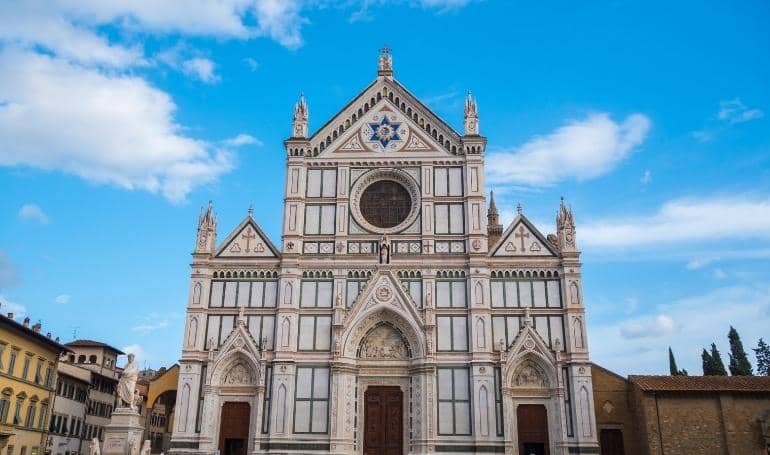
Difficulty
The Florence route climbs from the valleys of Arno River up through the Tuscan hills, and into the forested Apennine mountains.
Pilgrims starting from Florence will experience climbs and descents of 500-1,500 meters through forested paths, with steep grades of 25% or greater.
Most pilgrims daily walk about 18 km, for 5–7 hours to complete each official stage.
While considered more strenuous than much of Spain’s Camino de Santiago, the Tuscan section of the Via di Francesco rewards pilgrims with rich and pristine nature. Pilgrims can experience solitude, the sounds of the forest, and precious time for reflection and retreat.
Looking for a printable walking guide? Get that and more in the Pilgrim Essentials Kit.
Where to Begin
Florence
The official route begins at Santa Croce in the center of Florence. See the Tuscan Stages.
La Verna
Some pilgrims also begin at La Verna Sanctuary. See how to get to La Verna.
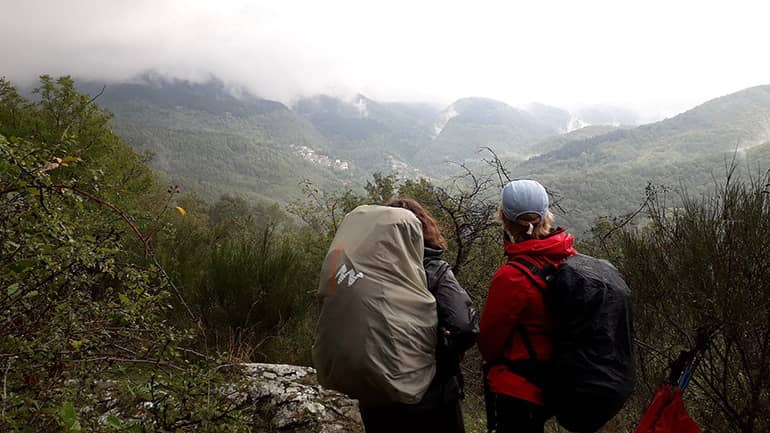
Seasons and Timing
- Prime Time
- Not Ideal
- Limited
- Off Season
The season most commonly extends from April through October. Fewer accommodations are available in March and November.
Some accommodations — such as donativos and monasteries — close for the season by mid-October.
Many Italians vacation during the hot month of August, reducing available accommodations and fewer open stores.
Helpful Guides:
Schedule Your Walk
Florence to
La Verna
Distance
Number of Stages
Estimated Days
Florence to
Assisi
Distance
Number of Stages
Estimated Days
Florence to
Rome
Distance
Number of Stages
Estimated Days
NOTE: For pilgrims with fewer days available, the popular La Verna to Assisi section may be completed in 9-12 days. See more about the La Verna.
Multiple Routes
The Via di Francesco is a collection of trails from Florence to Rome. While the official route is noted in our GPX files, different guidebooks offer unique route options and alternatives. Some routes may explore a mountain monastery and rejoin the official path later on. Eventually, all roads lead to Rome.
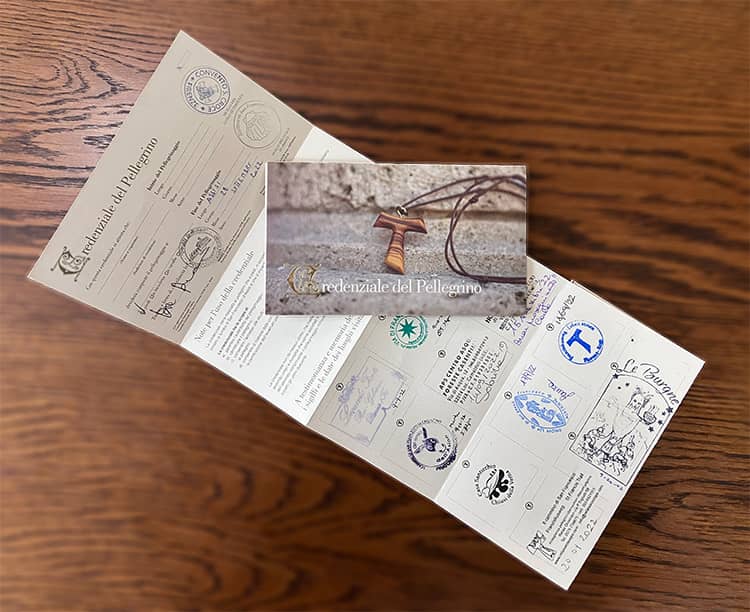
Credentials and Stamps
Credentials are used as a “pilgrim’s passport” along the trail. Pilgrims collect stamps (also known as “timbris”) from churches, hotels, and stores, and may present them in either Assisi or Rome to receive a certificate of completion, also known as a Testimonium.
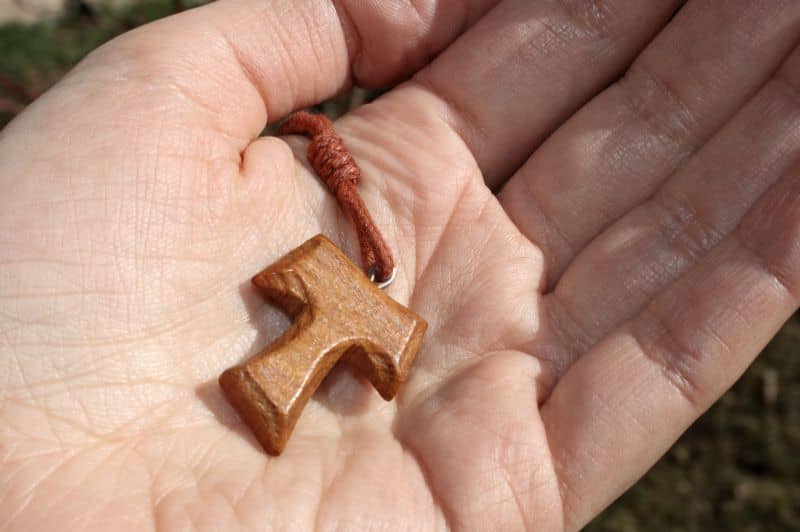
Where to Receive the Tau
St. Francis adopted the symbol of the Tau when he began serving lepers, and the Tau now marks the trail for pilgrims to follow.
It is possible to obtain Tau symbols at shops near Santa Croce in Florence, or at churches and stores along the way. Many options are available at La Verna Sanctuary bookstore and stores of Assisi.
Accommodations
Accommodations are available throughout the trail, but availability may be limited by season, local events, and the number of pilgrims on the trail.
See accommodations from Florence to La Verna
Want a printable accommodations guide? Get that and more in the Pilgrim Essentials Kit.
Services
Laundromats are rare. Consider carrying a lightweight clothesline.
Grocery stores — commonly COOP — are available in most larger towns: Florence, Pontassieve, Diacceto (small), and Stia.
Cafes and bars usually open early (6-8am), but are often closed 2-7pm. Sandwiches, pastries and snacks are available.
Restaurants often close after 2pm and re-open closer to 7:30pm.

Water
Potable drinking stations are marked and available in most towns, but not common in the middle of a stage. Plan to carry 1.5 to 2 liters in the fall, and more than 2 L in the summer.
Most people drink tap water. Consider bringing a filter as some fountains are labeled non-potable.
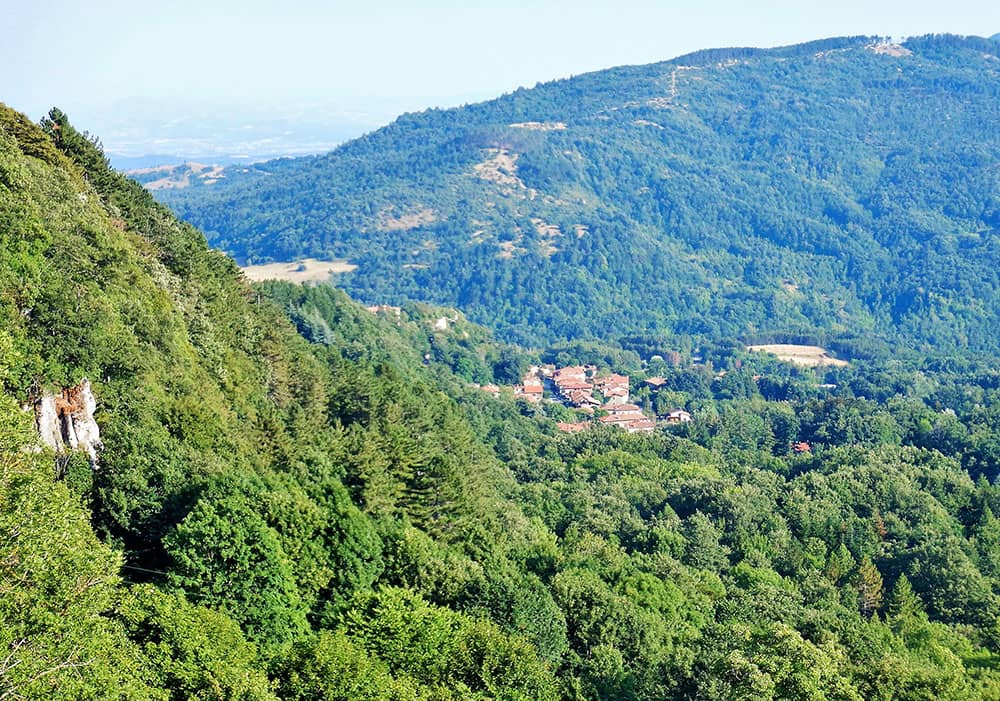
National Park
The Florence section guides pilgrims for 60 km through the Casentinesi Forests National Park. The path enters the park after Stia and continues into the sacred forests surrounding La Verna Sanctuary.

